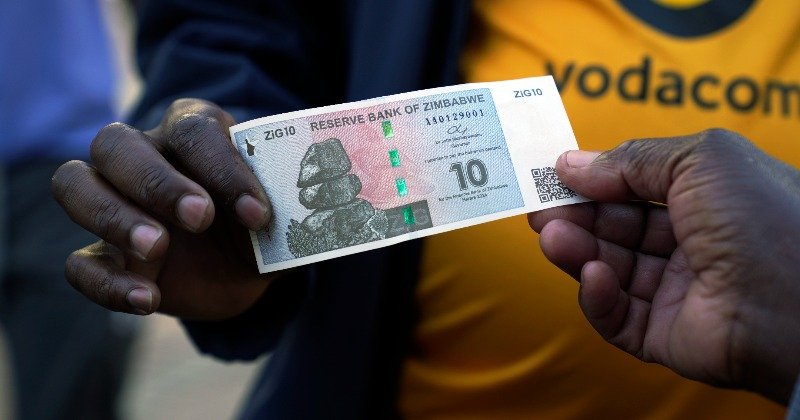- Zimbabwe has introduced a new currency called the ZiG.
- Zimbabwe’s central bank said the country is “recalibrating its monetary policy framework”.
- However, it remains to be seen whether the ZiG can gain the confidence of consumers.
Last month, Zimbabwe rolled out a new gold-backed currency called the ZiG, or Zimbabwe Gold, in an effort to mitigate the currency instability and hyperinflation that has plagued the country for decades.
The country is “recalibrating its monetary policy framework to re-anchor price and exchange rate stability and to boost confidence in the local currency,” Zimbabwe’s central bank said in a statement.
Having a stable currency is paramount for an economic recovery in Zimbabwe, experts say. The World Bank notes that the country continues to grapple with fraught economic conditions as “macroeconomic volatility fueled by monetary instability and substantial exchange rate distortions keeps Zimbabwe’s economic activity below its potential.”
‘Restoration of stability’
Zimbabwe has long struggled with high inflation, with inflation rates exceeding 500% in recent years. In March 2024, the annual rate of price increases at 55.3%, a seven-month high.
The country’s central bank, the Reserve Bank of Zimbabwe, said that the weakening of the exchange rate has contributed to a rise in annual inflation, underscoring the need to foster stability.
“The Bank’s priority policy focus is critical for supporting the economy’s growth prospects through the restoration of stability, convertibility, and transactional convenience of the local currency,” the central bank said in its statement.
With effect from 5 April, banks in Zimbabwe have been converting the country’s previous national currency, the Zimbabwe dollar, into ZiGs.
The central bank says the process aims to “foster simplicity, certainty, and predictability in monetary and financial affairs.” The ZiG, the bank added, will circulate alongside other foreign currencies in the economy.
Confidence is key
In 2008, hyperinflation peaked at staggering levels, causing the Zimbabwe dollar to lose its value and the government to abandon it in 2009. Since then, the US dollar and other foreign currencies have been widely-used throughout the economy.
It remains to be seen whether the new ZiG can gain the confidence of the public and become a stable local currency, which would allow officials to regain control over monetary policy.
Many Zimbabweans like the safety of the US dollar, which accounts for around 85% of transactions, according to the BBC. It’s for this reason the central bank decided on a mix of the ZiG and foreign currencies under a multi-currency system.
Nonetheless, authorities have been reportedly pursuing unofficial traders who continue to eschew the ZiG.
Local payment systems
Stable currencies and reliable economics conditions are critical for developing industries and attracting foreign investments, experts maintain.
Across Africa, efforts are underway to enhance payment systems for local currencies. For instance, the Pan-African Payment and Settlement System (PAPSS), which was developed by the African Union and the African Export-Import Bank, is a centralized financial market infrastructure enabling the secure flow of money across African borders.
The PAPSS allows users to make near-instant payments in their local currency, without converting to a foreign currency or using a third-party institution or bank.
Last year, an insight report from the World Economic Forum, AfCFTA: A New Era for Global Business and Investment in Africa, noted that PAPSS “will help African businesses avoid the delays in confirming payments that have long been a barrier to trade” and will “lead to increased trust and time capacity to increase trade volumes.”
This article was originally sourced from World Economic Forum
#ZiG #Zimbabwe #Rolls #Worlds #Newest #Currency #Heres



